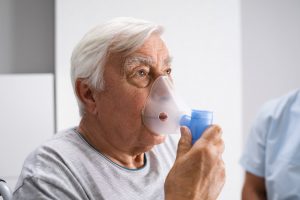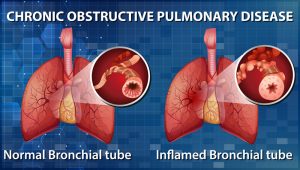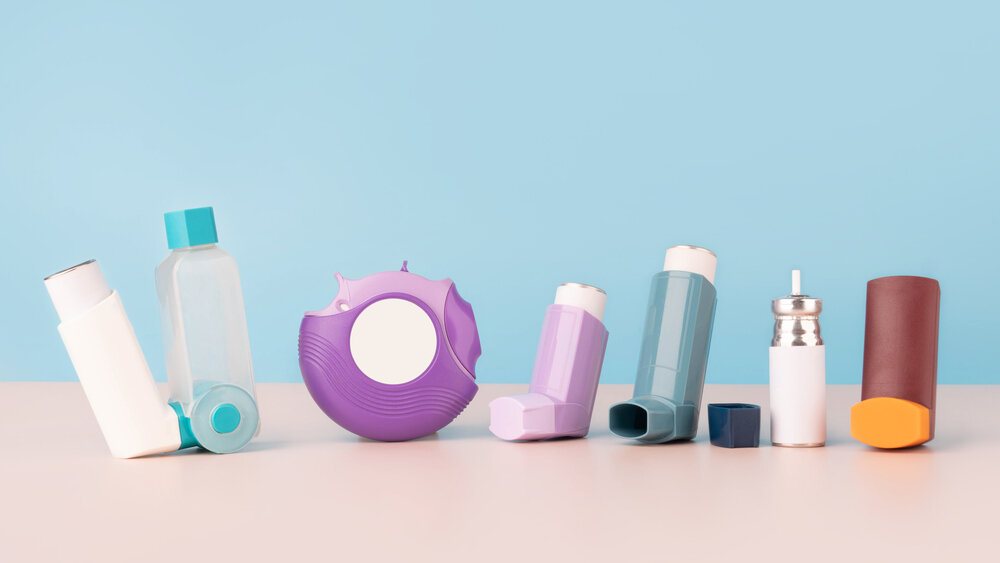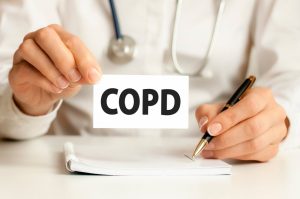Top Common COPD Inhalers in the USA
COPD Inhaler is mainly prescribed to reduce COPD symptoms. Chronic obstructive pulmonary disease (COPD) is nothing but something like black tar which gets deposited in the lungs. The condition is characterized by constriction of airways in conjunction with damage to lung tissue.
The major signs of the disease are gradual shortness of breath, wheezing, chest tightness as well as cough with sputum production. Also if you’ve had a cough that had vanished for what feels like forever, you may experience a serious condition named chronic bronchitis; it is also a type of chronic obstructive pulmonary disease (COPD). This condition fills your airways with thick mucus.
Treatment of COPD in the USA:
Inhalers for COPD are a core of treatment, but understanding the differences between various inhalers can at times be misleading.
Status of COPD treatment in the USA:

In the USA, generic prescriptions constitute around 9 out of every 10 dispensed prescriptions. This adds to a total of more than 4 billion prescriptions in 2019. On the other hand, brand drugs comprise only 10% of the dispensed prescriptions, however amount to more than 75% of total drug expenditure. In 2020, the average co-pay for brand medications was $56.32 and for generic medications, it was $6.97, with 92% prescriptions for $20 or below.
The cost-savings of this scale might be crucially significant for people having chronic conditions, including respiratory ailments such as asthma or chronic obstructive pulmonary disease (COPD). In the USA, the incidence of asthma is about 7.7% having an effect on 25 million people. Also, the incidence of COPD is nearly 6.6% among adults (more than 18 years of age). This has an impact on around 16.4 million individuals.
People with asthma and COPD often need one or more inhalers regularly to preserve their respiratory health. People with COPD specifically are often elderly and can depend upon Offshore Cheap Meds for help with treatment costs possibly reaching above $2800 per year.
The average per-person medical cost every year for asthma people in the USA was $3366 in 2015, of which $1830 was attributable to prescription drugs. The high maintenance prices of medications is a vital factor adding to non-adherence with orally inhaled medications. Also, it represents a vital barrier to optimal care for a lot of patients with COPD or asthma.
Improved availability of inhalers and COPD drugs via increased generic medications in the market must cause an improvement in the drug adherence and a reduced overall economic burden of COPD in the USA.
What is a COPD Inhaler?

A COPD Inhaler is a device in which medication is present that one takes by inhaling or breathing in.
This is a device that delivers medicine directly into your lungs as you breathe in. A doctor or nurse will advise you on how to use an inhaler correctly and how often to use it.
These devices are often used for treating COPD. There are a number of inhalers present that might be perplexing.
Types of COPD Inhalers:
COPD inhalers may be comprised of either a single drug or a combination of drugs. An inhaler may involve a bronchodilator (used to open up your airways as well as increase airflow); a corticosteroid (aimed at reducing inflammation in your airways); a blend of various bronchodilators or a combination of bronchodilator and corticosteroid. Few inhalers are intended to be used on a daily basis over the long term, while others, named as rescue inhalers, are used only in emergency circumstances.
Here are mentioned some most common COPD inhalers that are available in the market these days. If you think you might benefit from a different type of inhaler than what you’ve been prescribed, talk to your doctor about your concerns.
COPD Inhaler Types available in the USA:

Short-acting bronchodilator inhalers:
Doctors often recommend a COPD inhaler with a bronchodilator medication. These are useful for relaxing the airway muscles (bronchi) and help them dilate as wide as possible. Individuals frequently call them relievers. They can be:
- Antimuscarinic Inhalers: Ipratropium (Atrovent).
- Beta-agonist inhalers: Salbutamol (Salamol, Salbutamol, Salbulin, Asmasal, and Ventolin) and Terbutaline (Bricanyl). Both these inhalers are often (but not always) blue in colour. Other inhalers consisting of different medications might be blue as well.
These COPD inhalers act well for a few individuals however, not so well in others. Characteristically, a beta agonist inhaler improves the signs of wheeze and shallow breathing improve within 5 to 15 minutes, and antimuscarinic inhaler improves the signs within half an hour. The effect from both types classically continues for three to six hours.
A few individuals with mild or recurrent signs only require an inhaler as needed for when shallow breathing or wheeze happens. A few individuals require to make use of an inhaler daily. The antimuscarinic and beta-agonist inhalers act in several ways. Making use of two, one of each type, might assist in a few individuals better than one type alone.
Long-acting bronchodilator inhalers:
These COPD inhalers act similarly as short-acting inhalers however, each dose persists at least 12 hours. Long-acting bronchodilators might be an alternative if signs remain worrying in spite of using a short-acting bronchodilator.
- Antimuscarinic inhalers: Aclidinium (Eeklira Genuair), Tiotropium (Spiriva), Umeclidinium (Incruse), and Glycopyrronium (Seebri Breezhaler). The inhaler device is green in colour. If a person begins this medicine, he or she must stop Ipratropium (Atrovent) if he or she was using this previously.
- Beta-agonist inhalers: Salmeterol (Serevent, a green colour inhaler), Formoterol (Atimos, Foradil, and Oxis), and Indacaterol (Onbrez Breezhaler). A person may carry on using a short-acting bronchodilator inhaler with such drugs.
Steroid Inhaler:
A steroid and a bronchodilator inhaler might be a great help if a person has more serious COPD or consistent flare-ups (aggravations) of signs. Steroids lower down inflammation.
Steroid COPD inhalers can be used together with a long-acting beta-agonist inhaler. This might be with two distinct inhalers or with a single inhaler consisting of two medications. The major inhaled steroid drugs utilized for COPD include:
- Budesonide: Pulmicort, Easyhaler Budesonide, and Novolizer Budesonide.
- Beclometasone: Brands such as Asmabec, Beclazone, Qvar, Pulvinal Beclometasone, Clenil Modulite. These inhalers are generally brown and at times red in colour.
- Fluticasone: Flixotide. This is a yellow or orange colour inhaler.
Standard Metered-Dose Inhaler (MDI):
People have been using MDI since more than 40 years and can deliver several types and brands of medications. It comprises a pressurised inactive gas that drives a dose of medication in every ‘puff’. Patient can press the top of these COPD inhalers to release the medication dose.
This form of inhaler can be used quickly, it is small and suitable to carry. It requires an effective co-ordination to press the canister and inhale the medication completely at the same time. At times, these are called evohalers.
The standard MDI is extensively utilized inhaler. Yet, a lot of individuals do not use it to its best effect. Errors may involve:
- Not shaking the inhaler prior to use.
- Breathing in too suddenly or at the wrong time.
- Not holding the breath long enough after inhaling the contents.
Until lately, chlorofluorocarbon (CFC) is the propellant gas present in MDIs. Yet, CFCs may damage the ozone layer of the earth, and so are being phased out. The novel CFC-free inhalers act well. However, making use of a propellant gas that does not cause damage to the ozone layer is suggested.
Nebulisers:

Nebulisers are devices that convert the fluid form of any short-acting bronchodilator drug into a fine mist, such as an aerosol. Patient inhale this with a face mask or a mouthpiece. Nebulisers are no more efficacious compared to the normal COPD inhalers. Yet, they are intensely helpful for individuals who feel very tired (fatigued) with their breathing, or individuals who have breathlessness issues.
Nebulisers can be used majorly in hospital for serious COPD attacks when there is a need of large doses of inhaled medications. They can be used less commonly compared to that in the past. As, modern spacer machines are generally as good as nebulisers for providing large doses of inhaled drugs. Patient does not require any co-ordination to make use of a nebuliser. He or she may just inhale or exhale and they just inhale the medication.
Advair Inhaler:
Advair is a blend of two drugs: fluticasone, a corticosteroid, as well as salmeterol, a long-acting bronchodilator. This type of COPD inhaler is used for the maintenance treatment of chronic obstructive pulmonary disease.
Advair comes in the form of an inhaled powder, Advair Diskus or as an aerosol inhaler, Advair HFA. The Diskus comes in the doses of 100/50, 250/50, or 500/50, and the HFA comes in the doses 45/21, 115/21, and 230/21.
Cost: The Advair discus usually supplies 30 days of drug, with out-of-pocket costs in the range of $100 for the generic drug to $430 for brand drug.
Symbicort Inhaler:
At first, this COPD inhaler is used for treating asthma, Symbicort was recommended by the Food and Drug Administration (FDA) in February 2009 for treating stable COPD. Symbicort is composed of formoterol, a long-acting bronchodilator, as well as budesonide, a corticosteroid.
Atrovent Inhaler:
Atrovent is composed of ipratropium, an anticholinergic bronchodilator. This COPD inhaler is utilized in the maintenance treatment of COPD. It might be taken as 2 inhalations of 17 mcg each. It is classically used thrice per day.
Cost: The out-of-pocket price of a canister consisting a 30-day supply is nearly $400 and no generic is available.
Combivent Respimat Inhaler:
Combivent is composed of 2 bronchodilators: albuterol (a beta-agonist: beta-agonists assist the muscles in the region of your airways to loosen up) as well as ipratropium (an anticholinergic: a diverse form of medication that also aids the muscles around your airways to relax).
Combination bronchodilator COPD inhalers including Combivent may assist in augmenting the bronchodilator effect of the drugs, with similar or fewer side effects. This drug comes as an aerosol metered-dose inhaler with a dose of 100 mcg albuterol/20 mcg ipratropium. It may be used thrice a day.
Cost: A standard inhaler usually involves a 30-day supply and is expected to cost nearly $450. No generic is available for this combination.
Spiriva Inhaler:

Employed as a maintenance treatment for COPD, Spiriva is composed of a medication named tiotropium, an anticholinergic bronchodilator. It opens as well as relaxes the airways, making it simpler to inhale air.
The inhaled solution is available in the doses 1.25 mcg or 2.5 mcg. People can use it as 2 inhalations one time in a day.
Cost: The price of a 30-day supply for this COPD inhaler is approximately $450, and there is no generic version.
Proventil Inhaler:
Proventil is a rescue inhaler (in other words, an inhaler intended to help immediately with breathing problems) containing albuterol, a short-acting, beta-agonist bronchodilator. This COPD inhaler helps instantly relax the airways, making it simpler to inhale air. Proventil can frequently be used for rapid episodes of shortness of breath associated with bronchospasm in both asthmas as well as chronic obstructive pulmonary disease patients.
Pulmicort:
Pulmicort is comprised of budesonide, a corticosteroid that aids in decreasing inflammation in the airways, making it easier for you to take in air. Pulmicort is utilized in the maintenance treatment of COPD.
This drug comes as an inhaled powder in doses of 90 mcg and 180 mcg. It is generally used two times per day.
Cost: The cost of a 30-day supply for this COPD inhaler is around $40, no generic version is available.
Arcapta Neohaler:
Arcapta Neohaler is a very long-acting beta-agonist bronchodilator. This COPD inhaler can be used for once-daily use, long-term maintenance treatment of COPD, such as emphysema as well as chronic bronchitis.
Trelegy Ellipta Inhaler:
This COPD inhaler combines 3 separate long-acting medications in one inhaler. These involve umeclidinium (a long-acting muscarinic antagonist), fluticasone furoate (an inhaled corticosteroid) as well as vilanterol (a long-acting beta2-adrenergic agonist). Trelegy can be used once daily and considerably helps to assist in lung function.
Lowest Price for common COPD inhalers
| Inhalers | Price | Shop |
| Generic Advair/Seretide 50/25MCG/120MDI | $15.63 for 1 unit | Buy |
| Generic Symbicort (Budesonide/ Formoterol)100-6 MCG/120MDI | $22.97 for 1 unit | Buy |
| Generic Atrovent (Ipratropium Bromide) 20MCG/200MDI | $16.44 for 1 unit | Buy |
| Generic Combivent Respimat 50/20MCG/120MDI | $30.26 for 1 unit | Buy |
| Generic Pulmicort Inhaler 100MCG/200MDI | $35.06 for 1 unit | Buy |
Recommendations of Inhaler in COPD:
It might be intensely puzzling to know about the various types and combination of inhalers that come in the market for COPD. While looking out for the best COPD Inhaler, doctors would consider some primary factors:
Signs:

Signs of either breathing difficulty (dyspnea) or exercise intolerance are vital while choosing a treatment. Breathing difficulty may be described by the COPD Assessment Test (CAT) or the Modified Medical British Research Council dyspnea scale (mMRC dyspnea scale). The estimation of exercise intolerance may be done by making use of the 6-minute walk test.
Concurrent Conditions:
Various options must be considered if an individual has a history of asthma or other health problems.
COPD Aggravations:
Various options should be made for people having one or more aggravations per year and for people who do not.
Spirometry:
Forced expiratory volume per second (FEV1) explains the extent of limited airflow.
FAQs:
What is the best medicine for COPD?
The best medicine for COPD depends on individual unique needs and requirements. The most commonly prescribed medications include long-acting bronchodilators and corticosteroids. They are often combined in inhalers like Advair or Symbicort. It is important to consult a doctor for personalized treatment.
What is the least expensive COPD inhaler?
The least expensive COPD inhaler among generics is the Generic Advair/Seretide, costing approximately $15.63 per unit. Always verify prices with pharmacies as they can vary and discuss with your doctor for suitability.
What are the top 5 inhalers for COPD?
The top 5 inhalers for COPD include Advair, Symbicort, Spiriva, Pulmicort, and Trelegy Ellipta. These inhalers combine bronchodilators and corticosteroids to manage symptoms effectively, enhancing breathing and reducing inflammation.
What is the best inhaler for asthma and COPD?
Advair is considered one of the best inhalers for both asthma and COPD. It contains fluticasone and salmeterol, a combination that reduces inflammation and relaxes airway muscles, improving airflow and control over symptoms.

